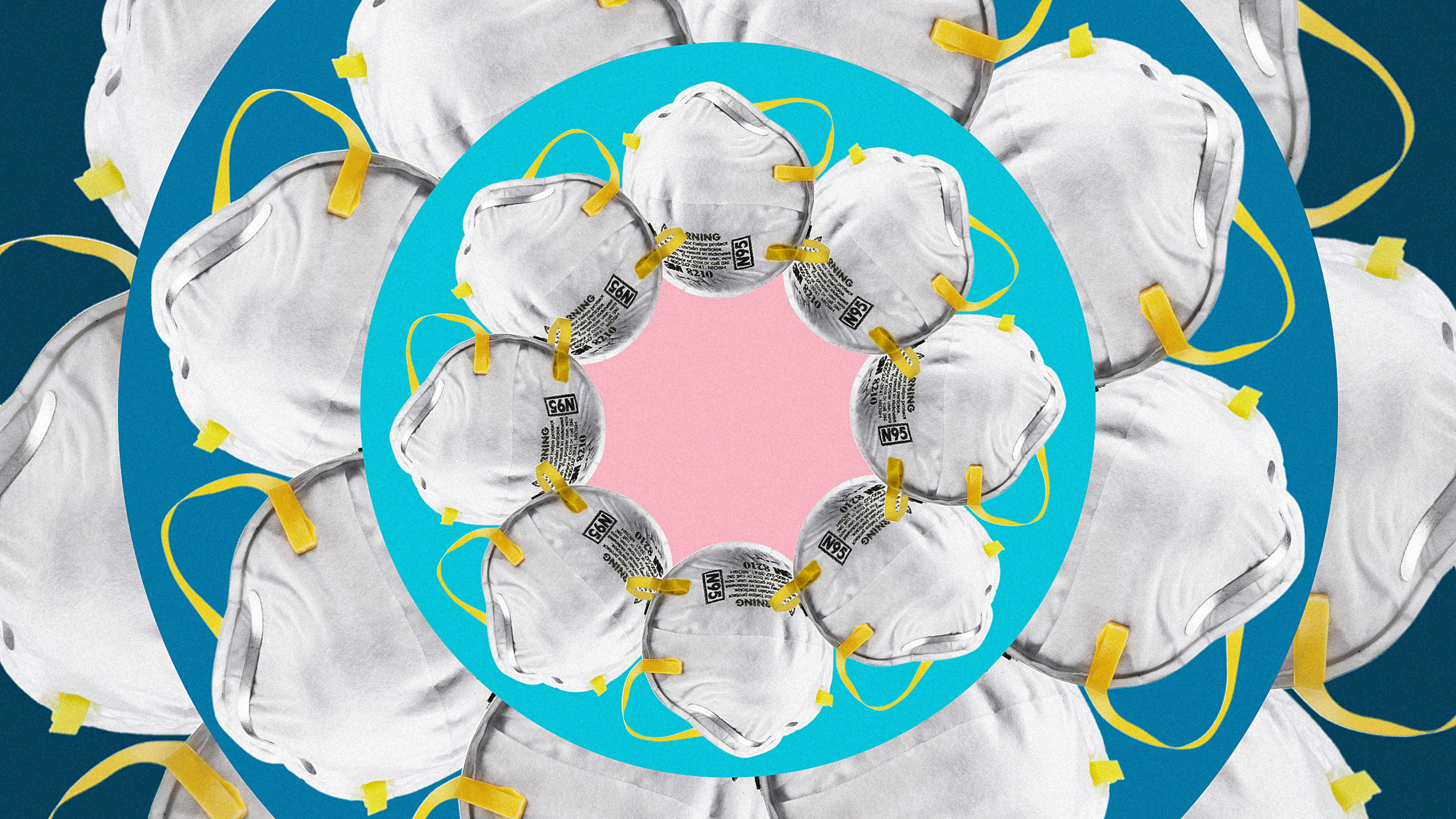One of the tragedies of the coronavirus crisis is the lack of protection for healthcare workers: With a shortage of N95 masks—the respirators that can help filter out virus-filled droplets from coughs or sneezes—doctors and nurses in the U.S. are begging the government to do more to increase production. In Italy and China, thousands of doctors were infected with COVID-19 in part because they didn’t have masks, gloves, or other protection. Many have died.
The U.S. government’s national stockpile includes 12 million N95 masks and 30 million of the less-effective simple surgical masks. But during a pandemic, the Department of Health and Human Services estimates that as many as 3.5 billion could be needed in a single year. Already, hospitals and clinics are rationing masks. Some healthcare workers, in desperation, are using DIY masks, or none at all. “It’s like going to war with a butter knife,” one doctor told The Atlantic. It raises a question: Why aren’t N95 masks designed to be safely reused?
The mask shortage problem has happened before, including in the SARS epidemic, when some areas ran low on respirators. Following that, the National Academy of Sciences said that the Centers for Disease Control and Prevention should study whether the masks could be decontaminated and reused. “The problems that we’re facing today are not new, in that there was at least a small group of people that had recognized this was going to be a problem and we should be better prepared for it in the future,” says Ron Shaffer, a scientist who previously worked at the CDC and led a team researching the potential for reusing personal protective equipment.

The challenge, of course, is that if a mask is exposed to a virus like SARS-CoV-2, reusing it could potentially spread the virus. In a series of studies, Shaffer’s team identified some promising methods for eliminating viruses on N95 masks, including generating steam heat along with the mask in a microwave, and treating the mask with ultraviolet light. (Other methods, including using bleach, killed the virus but left an unpleasant smell and could also potentially damage the mask.) “The trick is you have to create a decontamination method that’s rigorous enough to kill the virus but gentle enough not to destroy the respirator,” he says. One problem is the fact that all masks are not alike; the researchers found that some were sturdier than others, and some broke down more easily. Some more recent studies by other researchers confirmed that when masks were disinfected with UV light multiple times, it affected the longevity of some models.
The decontamination process also has to be precise, and Shaffer says that’s one reason that manufacturers have resisted making reusable N95s. “We contaminated respirators with certain influenza strains and other viruses, and sure enough, you could kill the virus and keep the respirator intact, but that was in trained hands under well-controlled conditions,” he says. If the public was told that they could decontaminate masks, for example, with 30 seconds of steam in a microwave, some people might decide that two minutes would kill more germs—and destroy the mask’s material in the process. “You’ve melted the respirator, and they may not know that and they may try to put it on. Now they don’t get protection. There’s a false sense of security, and then I think the companies were afraid they’d get sued for that because somebody had used their product in a way that it wasn’t designed for.”
Even in a hospital that has the right disinfecting UV equipment, simply processing masks during a pandemic would be difficult. New York-Presbyterian Hospital, for example, is reportedly using 40,000 masks a day, and may use as many as 70,000 as the virus peaks in the city. While a hospital might have a microbiology lab with UV equipment, “they’re really not set up for sort of a routine operation, especially with the quantity of masks that we’re talking about,” says Shaffer. “Really, it’s a logistical problem to deal with. This is a tough problem to solve.”
Because of the current shortage, some hospitals are now taking a different approach of “limited reuse” recommended by the CDC as a last resort, and storing some used respirators in paper bags to be used for the next shift. But it’s not ideal. Some companies also already sell “elastomeric respirators,” reusable respirators that hospitals tend to avoid, both because of their expense and because they look more like gas masks, which can make patients more anxious. (Scientists are also working on washable cloth masks.)
As manufacturers scramble to make more disposable masks now—including clothing companies like Hanes that have been recruited for the effort—preparing for the next pandemic may mean revisiting the idea of reusable masks. The healthcare system can also do a better job of keeping masks on hand. “Stockpiling has a place, but it’s not the perfect solution,” says Shaffer. “I think that reusable respirators, like the elastomeric, are a solution for some situations. And I think that the manufacturers could do better working with what traditionally looks like the N95 masks and helping them to be a little more reusable.”
Recognize your brand’s excellence by applying to this year’s Brands That Matter Awards before the early-rate deadline, May 3.
